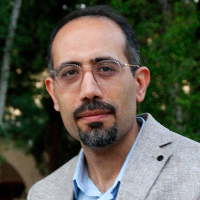The Grand Qur`an: New Hypothesis about the Scribe and the Time of Copying of Baysunghuri Qur`an
In some museums of the world, folios of a grand Qur'an are preserved, which is known as Baysanquarī Qur'an. The early scholars were supposed that the Qur`an was copied by Bāysunqur, the son of Gawharshad and Shahrokh (807- 850 AH/ 1405- 1447 AD.). Their idea was shaped under influence of Jame Bailie Fraser (1783- 1856), the Scottish travel-writer who traveled to khurasan in 1237/1822. Some scholars have studied the components of this Qur'an and have tried to determine and analyze the date of production, scribe and features of the manuscript. Yet, due to scattering and lack of reliable documents, almost none of these scholars have reached a clear and convincing knowledge of the scribe, the time of production and the purpose for preparing this Qur'an. The last statement agreed upon by the scholars, based on a report by Qaḑī Ahmad Qumī, in Gulistān Hunar. He has mentioned a story about a calligrapher named ʾumar ʾaqtaʾ who visited Timur and prepare a huge Quran for him as a gift. Scholars concluded that the time of copying of the Qur`an is the time of Amir Timur Gūrān (772- 807/1372-1405) and the scipt known as the ʾumar ʾaqtaʾ handwriting. But, during the last century almost 65 folios of the Qur'an have been collected in the Astan Quds Razavi collections. The folios are the largest number of folios related to the Qur`an preserved in a collection. Therefore, research on them provides new insights into the script, Scribe, and the time of the production of the Qur'an. This article, after a brief review of the codicological and historical features of the foilios, has made a direct observation on the script. The study revealed that at least three different but very close handwritings are used in the copying of the Qur`an. comparison of the handwritings to a signed piece copied by ʾumar ʾaqtaʾ is the second step of the study. The result shows that none of them is the hand of ʾumar ʾaqtaʾ. Additionally, a letter from Ghiath al-Din Jamshid al-Kashani, the Persian mathematican and astronomer, describes a Qur'an with similar characteristics to the Baysanghari Qur'an. He used the plural verb for copying the Qur`an which shows that more than one Calligrapher copied the Qur`an. According to the time of presence of ghiyath al-Din in Samarkand we can estimated the time of copying of the Qur`an between 823-832 /1420-1429. In addition to this, the huge Qur`an stand preserved in Bībī Khanum Mosque, Samarkand, can be related to the Qur`an. the thuluth inscriprtion on the stand bears the name of Ulugh beyk. Therefore, we have two hypothesis about the role of ʾumar ʾaqtaʾ in copying the manuscript: first, there were at least two grand Quran: one copied by ʾumar ʾaqtaʾ which has not been survived any folios of it and another is that Qur`an known as Baysunquri. The second hypothesis states that the Qur`an produced under advisory of ʾumar ʾaqtaʾ as the administrate of a scripturiom of Ulugh Beyk in Samarkand during 823- 832 AH/ 1420- 1429 AD.
- حق عضویت دریافتی صرف حمایت از نشریات عضو و نگهداری، تکمیل و توسعه مگیران میشود.
- پرداخت حق اشتراک و دانلود مقالات اجازه بازنشر آن در سایر رسانههای چاپی و دیجیتال را به کاربر نمیدهد.



